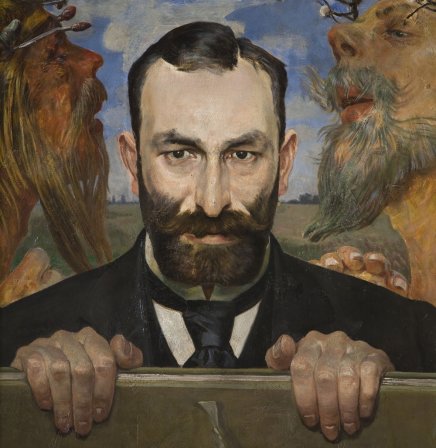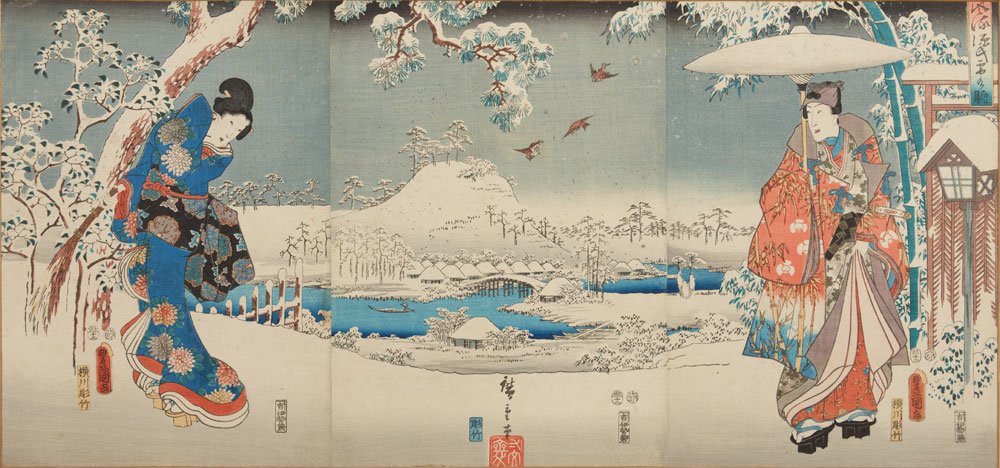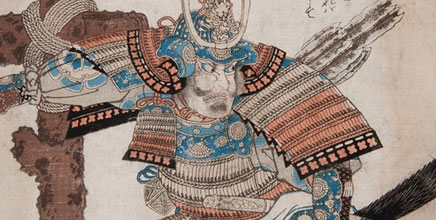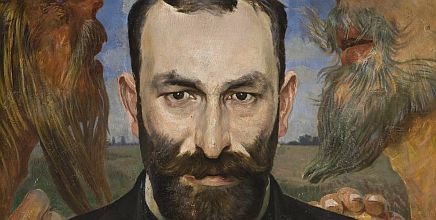MNK The Szołayski
pl. Szczepański 9, 31-011 Kraków Second floor- Monday: closed
- Tuesday: 10.00-18.00
- Wednesday - Sunday: 10.00-16.00
Information and reservations on weekdays 9 a.m.- 4 p.m.
Director of the National Museum in Krakow
Deputy Director for Scientific Activities
Deputy Director for for Exhibition Activities
Deputy Director for Strategy and Communications
Deputy director for the Management
Chief Accountant
Chief Cataloguer of the National Museum in Krakow

The exhibition titled "Long Live Art! Feliks Jasieński's Collection. From Japan to Europe. Beautiful and Useful Objects", displayed in the Szołayski House, features a wide selection of exhibits from the priceless collection of Feliks "Manggha" Jasieński. We present the person of the prominent Krakow collector, patriot, art patron and a friend of the artists – masters from the Young Poland movement. Not only can the visitors admire paintings, sculptures and prints, but they can also see ceramics, textiles, furniture and militaria from that period.
The aim of the exhibition is to remind the public of Feliks Jasieński, a unique personage in the history of Polish culture, and his priceless collection which resulted from his lifelong passion and talent, and which was donated to the National Museum in Krakow for the benefit of the Polish society. Through his donation, unparalleled in the history of our Museum, Jasieński earned the title of a co-founder of the National Museum in Krakow.
The collection donated to the Museum included works of art from Poland, Western Europe and the Middle and Far East, encompassing all disciplines: painting, prints, sculpture, decorative arts, militaria, old prints, musical instruments, and even folk art. The most valuable set among them is a core collection of works created by the artists from the Młoda Polska [Young Poland] movement – paintings, drawings, prints and sculptures – as well as Western European prints, mainly from the turn of the 19th and 20th centuries. Equally precious is the impressive selection of textiles, as well as Polish, European and Eastern clothing dating back to the period from the 15th to the 20th century.
An important place in Jasieński's collection belongs to art from the Far East, including Japanese and Chinese painting, Buddhist sculpture, textiles, small objects made of bone, wood, lacquer, bronze and enamel, Japanese and Chinese ceramics, as well as Japanese militaria and other exhibits. However, special attention should be paid to the incredibly impressive collection of Japanese colour woodcuts, currently consisting of over 4600 items. This part of the collection suffered considerable damage during the Second World War, when the Nazis looted nearly 500 prints. Nevertheless, the collection still remains one of the most valuable in Europe, and its status is based on the names of such outstanding masters of Japanese woodcuts of the Floating World genre as Harunobu, Toyokuni, Utamaro, Hiroshige, Kuniyoshi, and others. Other valuable works include those by Katsushiki Hokusai, whose art inspired Jasieński to adopt one of his pseudonyms – Manggha. Thanks to the involvement of the collector, who was enraptured by Japanese culture, this particularly valuable collection of Japanese objects became the source of various inspirations for the artists of his generation – the creators of Polish Modernism – who inscribed Polish art in the pan-European trend of changes taking place in the art of the turn of the century.
Numerous valuable exhibits from Jasieński's collection are displayed in permanent galleries of the National Museum: in the Sukiennice's Gallery of 19th-Century Polish Art, in the Gallery of 20th and 21st-Century Polish Art, Gallery of Decorative Arts and Gallery 'Arms and Uniforms in Poland' in the Main Building, as well as in the Józef Mehoffer House and formerly even in the Gallery of Western European Painting of the Princes Czartoryski Museum.
These objects were included in the exhibition as an essential complement of the illustrated history of various fields of art and culture in Poland and abroad. Paintings, sculptures and other objects from this collection usually have a status of irreplaceable exhibits and galleries very rarely replace them with other works. It is worth remembering that Feliks Jasieński himself, in cooperation with the National Museum in Krakow, included these works of art in the then museum display in the Sukiennice.
The choice of exhibits for the current exhibition was dictated by substantive reasons, namely the desire to present the diversity of the collection along with its greatest masterpieces, and to highlight the outstanding personality of its creator.
Our exhibition has been designed to be displayed in ten rooms. Five of them are allocated for the presentation of Polish art, four halls are devoted to the exhibition of art from Europe and the Middle and Far East, while one room has been reserved for a display of archival photographs from Feliks Jasieński's legacy.
Rooms dedicated to Polish art will display selected works from the field of painting, sculpture, drawing and printmaking that reflect the personality of the collector. They convey his preferences and aesthetic sensitivity, his passions as a collector, his social activity, patriotism and fascination with the culture of the East, and finally his “travelling” experiences. They talk about his physical travels in Europe and the Middle East, and his ideological peregrinations through the world of humanistic values, including his greatest passion – art.
Japanese art – Feliks Jasieński's special passion as a collector – will be presented mainly though woodcuts, paintings, Buddhist sculptures, as well as through meticulously crafted militaria and objects of everyday use.
Persian exhibits will be represented by colourful textiles such as carpets, tapestries and belts as well as elements of traditional dress.
Western European art will presented through the works of its greatest masters – Jasieński's contemporaries and those preceding his times – including those by Giovanni Battista Piranesi, Francisco Goya, Max Klinger, Maurice Denis, William Nicholson and James Whistler.
Text by Danuta Godyń, Bronisława Gumińska, Magdalena Laskowska, Beata Romanowicz

early second half of the 19th century, watercolour and ink on paper, silver, gold






















